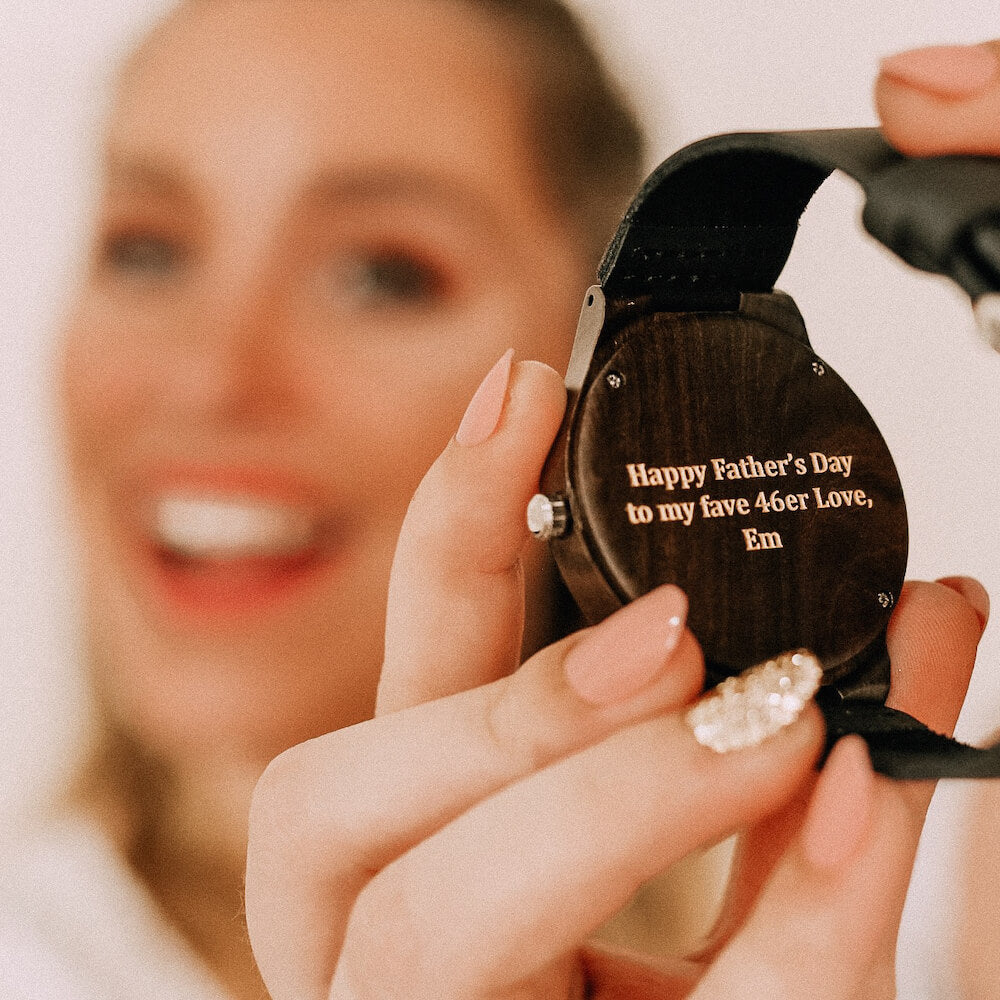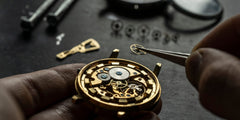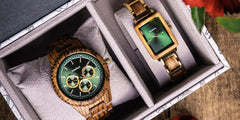From the openwork dial revealing the intricate inner workings to their centuries-old legacy, automatic watches have a certain nostalgic charm. Whether they are wooden automatic watches or stainless steel models, each piece is a work of art, reflecting the beauty of traditional watchmaking. But what exactly lies beneath these timeless tickers, and what is their story behind their invention? Treehut has compiled a guide on automatic watches, including their history, key features, and more.
Read More: What Makes Automatic Watches So Special?
What Is an Automatic Watch?

The automatic movement builds on the hand-wound mechanical movement, but the difference is that it is powered by the natural motion of the wearer’s wrist. Like old-school clockwork systems, it relies on a complex series of gears, springs, and rotating weights to tell the time. Thus, you never have to worry about the daily ritual of winding your watch (or remembering to do so in the first place) nor the risk of it stopping unexpectedly in the middle of the day. It will keep running as long as the wearer is in motion. Even the slightest movement, like waving at someone or typing on a keyboard, can trigger it. An automatic watch can last between 24 to 48 hours before losing power, and you just have to give it a good shake to get it working again.
History of Automatic Watches
Automatic watches have a long and complicated history, most of which is not clearly documented. Around 1770, the Swiss watchmaker Abraham-Louis Perrelet is believed to have invented the first self-winding watch, which had a power reserve of around eight hours. Other watchmakers made various improvements to the automatic mechanism in the following years.
It was not until World War I that it became apparent that pocket watches were not exactly convenient to use, especially for pilots and soldiers. This was when the timepieces we know today were created, and the automatic movement was incorporated into these new styles. However, very few of these watches were actually manufactured before the 1920s.
In 1923, an English watch repairer named John Hardwood was the first to develop his own version of an automatic watch that could be mass-produced — which was very similar to the modern automatic watch. Eventually, Rolex perfected the design in the 1930s, which led to the company’s unparalleled success. It was adopted by the entire industry, setting a standard for automatic watches that continues to influence modern watchmaking.
Although the introduction of the quartz movement threatened the mechanical watch industry in the 1970s, interest was revived in the 1980s. This was mostly due to the efforts of luxury brands that highlighted the heritage and craftsmanship of automatic watches. They still remain popular today, combining traditional designs with modern technology.
How Do Automatic Watches Work?

The following are the key parts of an automatic watch:
- Rotor: This is what differentiates an automatic movement from a mechanical movement. A rotor is a semi-circular weight that moves with the wearer’s wrist motion, which then winds the mainspring and, as a result, charges the watch.
- Mainspring: This is a coiled spring that basically stores the watch’s power.
- Gear Train: A series of gears transmit energy from the mainspring to the escapement, driving the hands of the watch.
- Escapement: The escapement controls the release of energy from the mainspring so the watch can tick steadily.
- Balance Wheel: This swings back and forth, controlling the ticking speed so the watch can keep accurate time.
- Jewels: Synthetic jewels protect all the above components from wear and tear so they can run smoothly.
To sum it up, an automatic watch operates pretty much the same way as a mechanical watch, but with the addition of a rotor that reacts to the movement of your wrist. The rotor’s spinning automatically winds the mainspring, which provides power to move the hands of the watch. This is also a quick way to distinguish automatic watches from quartz watches; the former has a sweeping second-hand (as opposed to the tick-tick motion) that moves smoothly due to the gentle release of the mainspring’s energy.
Read More: Timeless Craftsmanship Meets Nature’s Symphony: Treehut’s Immortal Automatic Collection
The Benefits of Choosing an Automatic Watch
It is difficult to return to a quartz watch once you have tried on an automatic watch. There are a number of reasons why you should own one, including the following:
- More Convenient: First off, you would never need to change the batteries or manually wind your automatic. The self-winding mechanism saves time and effort; the watch will keep running as long as you wear it often.
- Eco-Friendly: Since no batteries are required, automatic watches are also a more sustainable choice – especially if you are choosing those made from natural or recycled materials like ocean plastic waste or cactus leather.
- Highly Durable: With proper care and maintenance, automatic watches can last for decades or even generations. They may be more expensive than quartz watches, but they represent a long-term investment.
- Timeless Luxury: Automatic watches are undeniably much classier than other timepieces. They showcase exquisite craftsmanship, and are regarded as a symbol of luxury and prestige.
Shop Our Favorite Automatic Watches
































